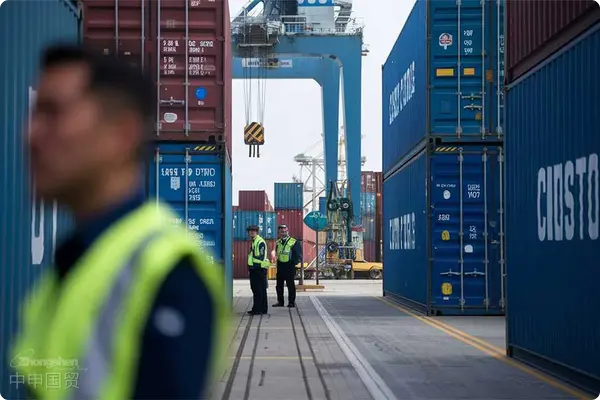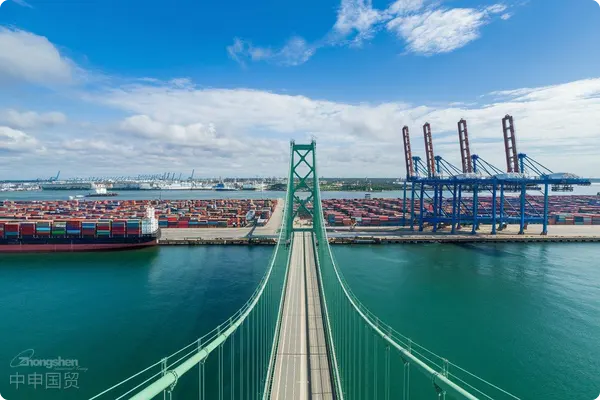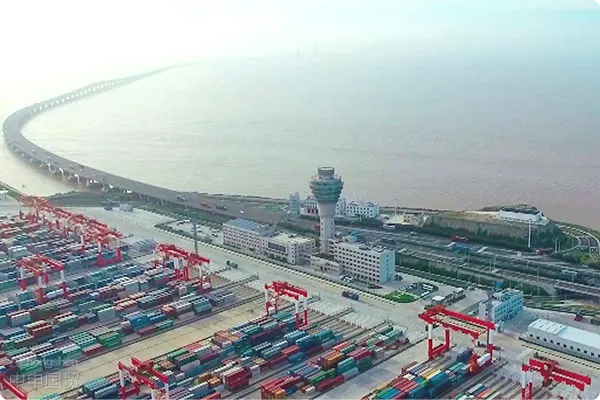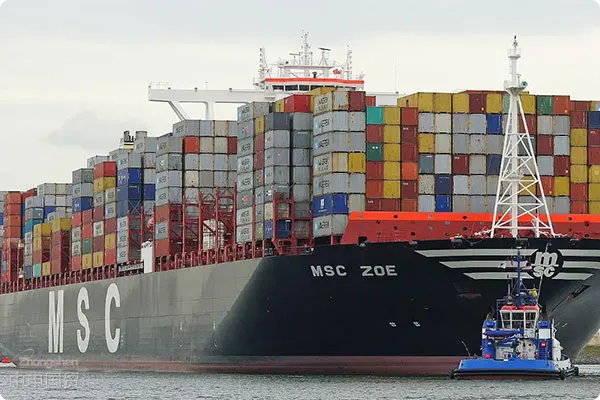- Shanghai Zhongshen International Trade Co., Ltd. - Two decades of trade agency expertise.
- Service Hotline: 139 1787 2118
Have your goods ever been detained due to customs inspection, resulting in significant economic losses? A minor error in product name declaration can lead to thousands of dollars in inspection fees, cargo delays, or even loss of customers! In this article, we will analyze in detail a real case of additional costs caused by an incorrect Chinese product name and share key strategies to avoid similar issues.

I. Detailed List of Inspection Fees
Previously encountered a situation where goods were inspected and detained by Shanghai Customs during export. Although the goods themselves had no issues and the HS code was correct, theincorrect Chinese product descriptionresulted in cargo detention, generating a series of fees totaling CNY 8,795. This not only delayed shipment, causing losses to both factory and client, but also incurred additional financial burdens.
Below is the detailed breakdown of inspection fees (cargo volume: 9.56 cubic meters):
- Inspection agency fee: CNY 400
- Tally fee: CNY 50
- Special seal: CNY 80
- Labor Fee: CNY 200
- Pending Processing Fee: CNY 400
- Customs Inspection Fee: CNY 3,095
- Port Area Pickup: CNY 400
- Port Area Cargo Pickup Fee: CNY 700
- Port Area Warehouse Outbound Fee: CNY 260
- Container demurrage charges are 200 - 500 US dollars per day: CNY 810
- Unloading Fee: CNY 600
- Port Entry Fee: CNY 1,800
Total: CNY 8,795
II. Analysis of Fee Reasonableness
Inspection-related fees
- Inspection Agency Fee (CNY 400): Service fee charged by the agency for assisting with customs inspection procedures, a standard charge.
- Tally Fee (CNY 50): Fee for cargo arrangement by tally clerks during inspection, reasonable and low-cost.
- Special Seal (CNY 80): Cost for resealing containers after customs inspection, a necessary expense.
- Labor Fee (CNY 200): Reasonable charge for manual labor including moving, unpacking, and repacking during inspection.
- Pending Processing Fee (CNY 400): Fee incurred during cargo waiting period, varies by specific circumstances.
2. Customs Inspection Fee (CNY 3,095)
- This is the largest expense item. Customs inspection fees are typically based on cargo type, quantity, and inspection complexity. The incorrect product description may have increased inspection complexity, resulting in higher charges.
3. Port Area Related Fees
- Port area pickup fee (CNY 400): Fee for moving goods out of the port area, normal.
- Port area cargo collection fee (CNY 700): Fee for collecting goods within the port area, slightly high but acceptable.
- Port warehouse exit fee (CNY 260): Fee incurred when goods leave the warehouse, reasonable.
4. Documentation and handling fees
- Amendment fee (CNY 810): Due to incorrect product description, requires customs declaration amendment involving manifest and B/L modifications, reasonable charge.
- Unloading fee (CNY 600): Fee for unloading goods from containers, normal.
5. Special fees
- Port entry facilitation fee (CNY 1,800): This fee is relatively high and requires special attention.
Regarding Port Entry Fee Settlement,
- Explanation: Possibly due to cargo detention requiring re-entry procedures or additional coordination with port/customs.
- Rationality: The amount is substantial with non-standard naming. Recommend verifying details with freight forwarder to understand specific charges.
6. Overall assessment
- Some fees fall within normal range, but there are high or unclear charges, especially the port entry facilitation fee. Considering possible special circumstances, recommend thorough verification of charge details.
III. Root Cause Analysis
Impact of incorrect Chinese product description
- Legal requirements: According to customs regulations, product names on declarations must be accurate and complete, no generic terms allowed.
- Violation risk: Using non-standard descriptions may be considered misdeclaration, risking inspection, detention or fines.
Risks of long-term use of generic product names
- Policy changes: Since 2020, customs has stricter declaration requirements, prohibiting generic category names.
- Inspection and supervision: Even if not previously detected, non-compliant declarations may face severe consequences if inspected.
IV. Improvement Suggestions
Standardize product name declaration
- Accurate product naming: Use actual product names, avoid generic terms.
- HS code alignment: Ensure product names match corresponding HS codes to avoid mismatches.
Stay updated on policy changes
- Monitor customs announcementsTimely obtain the latest customs policies and regulations, and adjust declaration methods.
- Train customs declaration personnelRegularly train employees responsible for customs declaration to ensure they are familiar with the latest regulations.
Communicate with freight forwarders
- Verify expense detailsConfirm the specific content and basis of each charge with the freight forwarding company to avoid unreasonable fees.
- Select reputable freight forwardersConsider partnering with professional and reputable freight forwarding companies to reduce unnecessary expenses.
Risk prevention and control
- Self-inspection and self-correctionConduct a comprehensive inspection of the companys customs declaration process and correct non-standard operations.
- Legal consultationIf in doubt, consult professional customs brokers or legal advisors to ensure compliance.
V. Potential Consequences and Prevention
Potential consequences
- Cargo delaysDetained goods causing delivery delays, affecting customer relationships.
- Economic lossesIncurring additional costs, increasing export expenses.
- Credit impactLeaving negative records with customs, potentially affecting future business.
Preventive measures
- Full complianceStrictly follow customs requirements for declaration, ensuring documentation consistency.
- Strengthen managementEstablish and improve internal management systems to prevent similar issues from recurring.
VI. Conclusion
The high fees incurred from the inspection of these goods by Shanghai Customs were primarily due toIrregular declaration of Chinese product names. To avoid similar situations, enterprises should promptly update declaration methods, ensure accurate and complete product names that meet customs requirements. Additionally, maintain good communication with freight forwarding companies, verify expense details, and avoid unnecessary expenditures. Compliance with regulations and standardized operations can not only reduce clearance risks but also enhance the companys reputation and competitiveness.
Friendly reminder:import and exportIn business, details determine success or failure. Enterprises should highly prioritize the accuracy and compliance of customs declaration documents, stay updated on policy changes, and ensure smooth trade activities.
Related Recommendations
? 2025. All Rights Reserved. Shanghai ICP No. 2023007705-2  PSB Record: Shanghai No.31011502009912
PSB Record: Shanghai No.31011502009912










